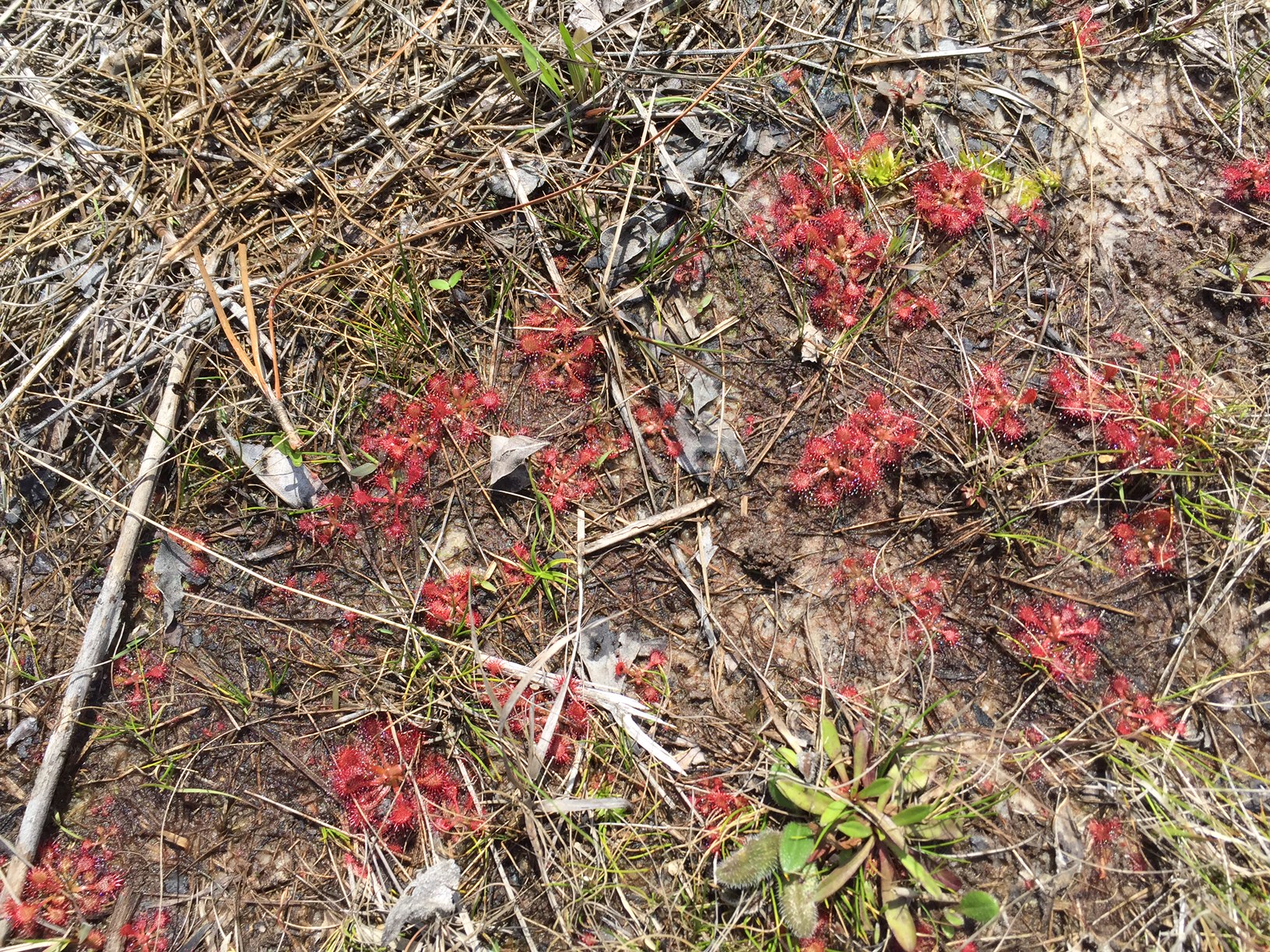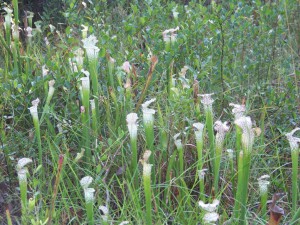Among the most fascinating natural phenomena in our area are the presence of dozens of species of carnivorous, or meat-eating, plants. Found in bogs, meadows, and seepage slopes with mucky, acidic soils and low levels of nutrients, these plants have adapted to their difficult conditions by developing ways to digest insects.These carnivores are best known by their common names; sundew, butterwort, bladderwort, and pitcher plants.
While there are six species of pitcher plants found in the panhandle and throughout the Gulf Coastal Plain, the “world’s largest concentration” can be found at Escambia County’s Tarkiln Bayou Preserve State Park. The “pitcher” part of the plant is actually a modified leaf, which is rounded into a hollow tube open at the top and partially covered by a hood. This hood is colorfully patterned, attracting insects also drawn to nectar inside the tubes. As insects crawl in, downward-facing hairs prevent them from escaping. They drown in the collected water within the tubes, then decompose via acids and enyzymes secreted by the plant into a “liquid fertilizer.” A handful of commensal animals, including flies, spiders, and small frogs, take advantage of the pitcher plants’ insect-trapping expertise and manage to avoid capture.
A guide to identifying all six of these pitcher plant species–white-top, parrot, trumpet-leaf, hooded, sweet, and yellow–can be found at the Florida Department of Environmental Protection’s wetland plant site. Now is the perfect time to see pitcher plants beginning to blossom.
While many people are familiar with pitcher plants, fewer notice the low-growing sundew. These plants may be smaller than a dime in circumference, and grow flat along very mucky soil in full sun. If shaded out even by relatively short grasses, sundew disappear. Their characteristic pinwheel-like appearance and deep red coloring help draw the eye if you look very closely. Sundews also excrete a sticky nectar, on which small insects get stuck and digested to provide nutrients to the plants.The leaves of butterwort plants work very similarly to sundews; they are typically bright green and succulent with sticky hairs that attract nutrients.
Bladderworts, also found in similar environments, use a different mechanism to trap insects. They actually have a bladder-like formation within their root system that opens and closes, siphoning water and unlucky insects in and out.
Regardless of their location, appearance, or method of trapping, carnivorous plants remain one of the most unusual, and interesting groups within the plant kingdom. Be sure to take the opportunity this spring to seek out a park or natural area populated with carnivorous plants–such as Tarkiln, Blackwater River State Park, or the public areas of Eglin Air Force Base and see them for yourself!
- Crane Flies - April 18, 2024
- Rosemary - March 7, 2024
- The Franklin Tree - January 18, 2024


